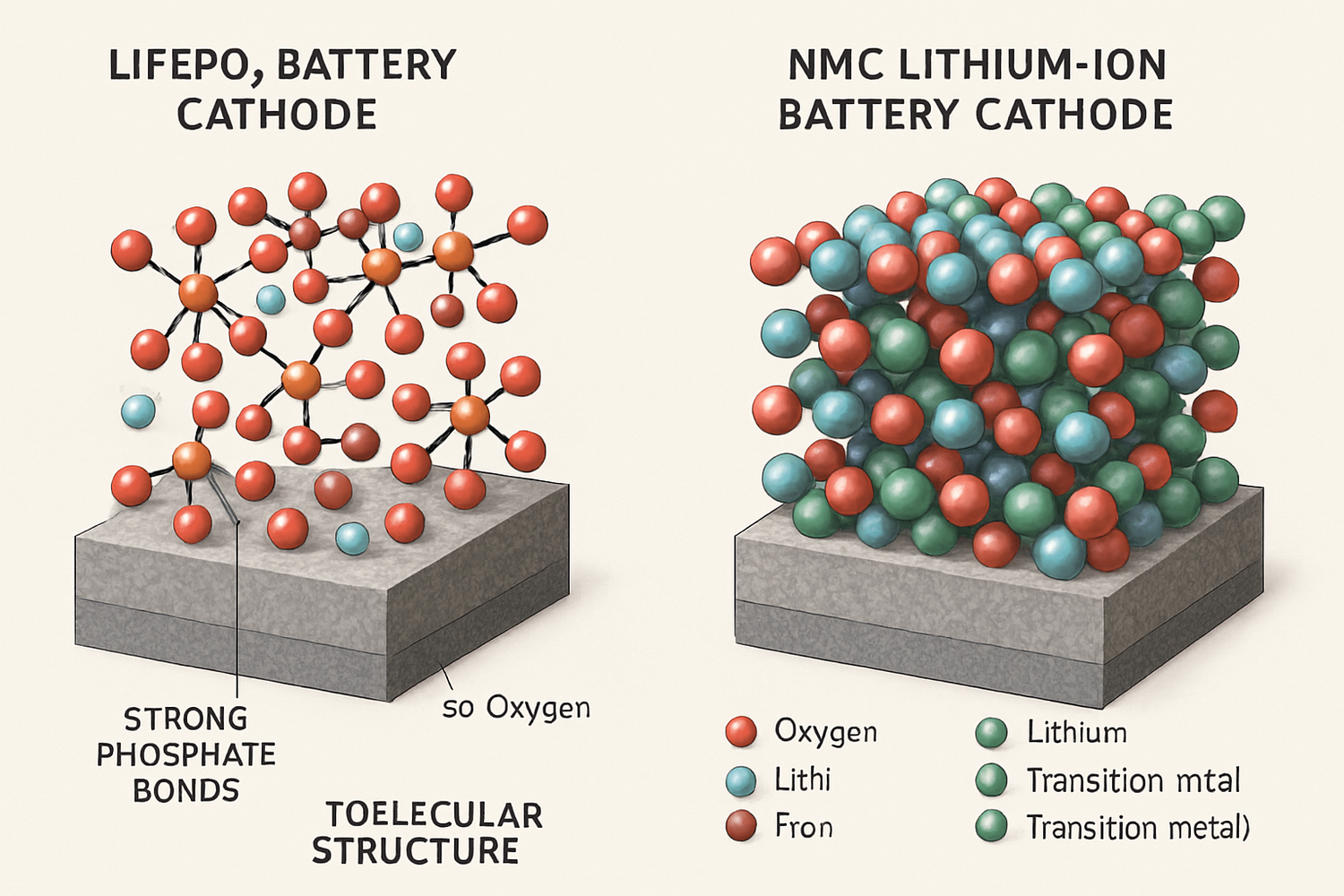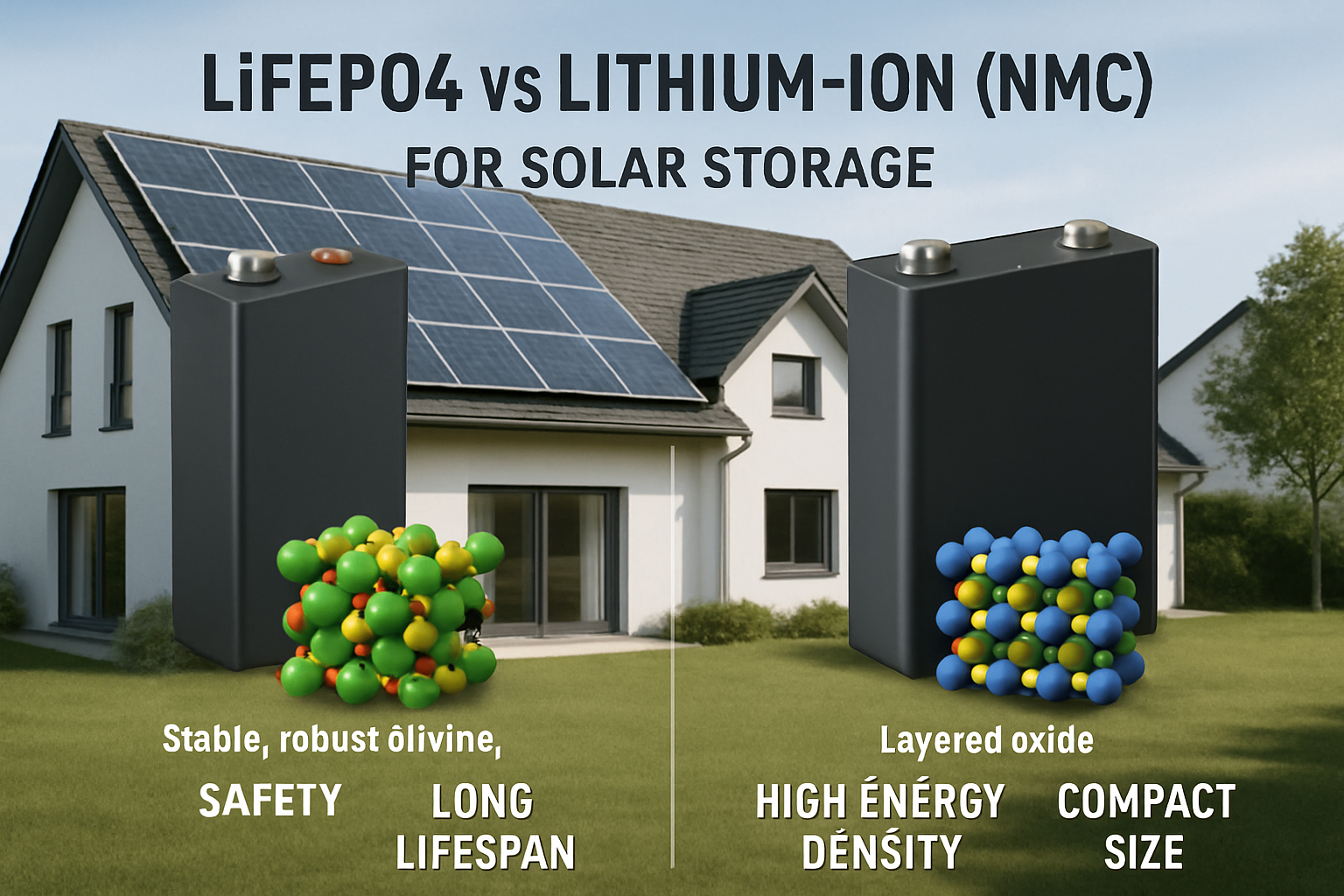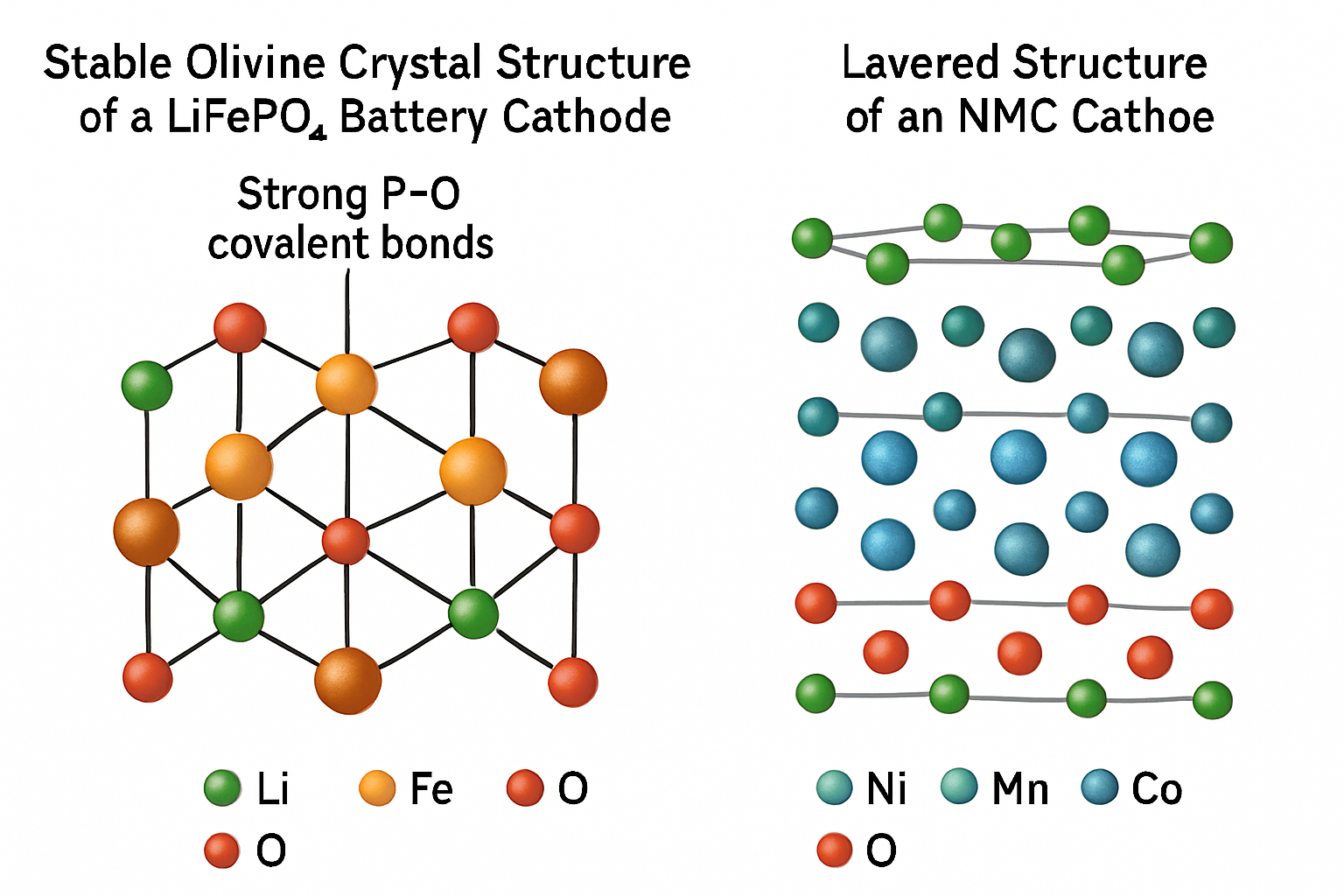Selecting the right battery for a solar energy system is a critical decision that directly impacts efficiency, safety, and long-term financial return. While the term 'lithium-ion' is used broadly, it encompasses several distinct chemistries. The two leading contenders for solar storage are Lithium Iron Phosphate (LiFePO4) and Nickel Manganese Cobalt (NMC). Understanding their fundamental differences is key to choosing the optimal solution for your energy needs.
Understanding the Core Chemical Differences
The chemistry inside a battery dictates its performance, lifespan, and safety profile. While both LiFePO4 and NMC are types of lithium-ion batteries, their internal makeup creates significant distinctions in how they function within a solar energy storage system.
What is a LiFePO4 Battery?
A LiFePO4 battery uses Lithium Iron Phosphate as its cathode material. This chemistry is known for its exceptionally stable molecular structure, often described as an olivine structure. The strong covalent bonds between the phosphorus and oxygen atoms make the cathode highly resilient to stress, preventing the release of oxygen even under extreme conditions. This inherent stability is the foundation of its reputation for safety and longevity.
What Are Other Lithium-Ion Batteries?
The most common alternative in the broader lithium-ion category is NMC, which uses a combination of Nickel, Manganese, and Cobalt for its cathode. This chemistry is engineered to maximize energy density, meaning it can store more energy in a smaller and lighter package. This characteristic has made NMC the dominant choice for portable electronics and electric vehicles, where space and weight are primary design constraints.
The Safety Factor: A Non-Negotiable Priority
For any home energy storage system, safety is paramount. The chemical and structural stability of a battery determines its risk of thermal runaway, a dangerous condition where the battery overheats uncontrollably.
Thermal Stability and Runaway Risk
LiFePO4 batteries have a significant advantage in thermal stability. Their threshold for thermal runaway is approximately 270°C (518°F), substantially higher than the 210°C (410°F) for NMC batteries. The robust P-O bond in the LiFePO4 structure is chemically stable and resists breaking down at high temperatures, which prevents the release of oxygen that fuels thermal events. This makes LiFePO4 an inherently safer choice for residential installations.
Response to Physical Stress
In addition to thermal stability, LiFePO4 batteries are more tolerant of physical abuse, such as overcharging, short-circuiting, or physical puncture. Their stable chemistry is less likely to react volatilely under these conditions, further reducing the risk of fire. This resilience provides an added layer of security and peace of mind for system owners.
Performance and Lifespan: A Long-Term Perspective
While initial performance is important, the true value of a solar storage battery is revealed over its operational life. Cycle life, efficiency, and usable capacity are the metrics that define long-term performance and return on investment.
Cycle Life and Longevity
Cycle life refers to the number of full charge and discharge cycles a battery can endure before its capacity significantly degrades. LiFePO4 batteries excel in this area, typically offering between 3,000 and 7,000 cycles, and sometimes more under optimal conditions. In contrast, NMC batteries generally provide 1,000 to 2,000 cycles. For a solar storage system that cycles daily, this means a LiFePO4 battery can last well over a decade, while an NMC battery may need replacement much sooner.
Energy Density and Physical Footprint
NMC batteries offer higher gravimetric energy density, typically around 200-250 Wh/kg compared to 160-180 Wh/kg for LiFePO4. This means an NMC battery can store more energy for a given weight. While this is a critical advantage for electric vehicles, it is less of a factor for stationary solar storage systems, where the slightly larger size and weight of a LiFePO4 battery are easily accommodated.
Efficiency and Power Delivery
A battery's ability to perform consistently is crucial for a reliable energy supply. Key metrics like C-rate and efficiency determine how well it delivers power. As explained in this ultimate reference for solar storage performance, LiFePO4 batteries often maintain higher efficiency across a wider state of charge. They can also be safely discharged more deeply (a higher Depth of Discharge or DoD) than NMC batteries without accelerating degradation, providing more usable energy from the same rated capacity.
Cost Analysis: Upfront Price vs. Total Cost of Ownership
A common misconception involves focusing solely on the initial purchase price of a battery. A more accurate financial assessment considers the total cost of ownership over the battery's entire lifespan.
Initial Investment
Historically, LiFePO4 batteries have had a higher upfront cost per kilowatt-hour (kWh). However, this gap has narrowed significantly. A 2020 report from the U.S. Department of Energy found that the cost per kWh for LiFePO4 cells was already about 6% lower than for NMC cells. As manufacturing scales, these costs continue to decline.
Calculating the Levelized Cost of Storage (LCOS)
The Levelized Cost of Storage is a more insightful metric, calculated by dividing the total lifetime cost by the total energy output over its life. Due to their vastly superior cycle life, LiFePO4 batteries deliver a much lower LCOS, making them the more economical choice in the long run.
| Feature | LiFePO4 Battery | NMC Lithium-Ion Battery |
|---|---|---|
| Initial Cost | Moderate to High | Moderate |
| Cycle Life | 3,000 - 7,000+ | 1,000 - 2,000 |
| Lifespan (Typical) | 10 - 15+ years | 5 - 8 years |
| Safety Profile | Very High | Moderate |
| Levelized Cost of Storage | Lower | Higher |
Disclaimer: This information is for educational purposes only and does not constitute financial or investment advice. Consult with a qualified professional before making any purchasing decisions.
Making the Right Choice for Your Solar System
When all factors are weighed, the choice for stationary solar storage becomes clear. While NMC batteries are excellent for applications demanding low weight and high energy density, their shorter lifespan and lower thermal stability make them less suitable for residential energy systems. LiFePO4 technology, with its focus on safety, longevity, and superior long-term value, is the definitive choice for homeowners seeking a reliable and durable solar energy storage solution. According to the International Energy Agency (IEA), LiFePO4 is already the dominant chemistry for energy storage deployment due to its lower cost and longer cycle life.
Frequently Asked Questions
Is LiFePO4 the same as lithium-ion?
No, LiFePO4 (Lithium Iron Phosphate) is a specific type of lithium-ion battery. The term 'lithium-ion' is a broad category that includes various chemistries, such as NMC (Nickel Manganese Cobalt) and LCO (Lithium Cobalt Oxide). LiFePO4 is distinguished by its use of iron phosphate in the cathode, which provides unique safety and longevity benefits.
Why is energy density less important for home solar storage?
For home energy storage, the battery is typically installed in a fixed location like a garage or utility room. Space and weight are not the primary constraints, unlike in electric vehicles or smartphones. Therefore, the superior safety, long lifespan, and lower long-term cost of LiFePO4 batteries outweigh the advantage of slightly higher energy density offered by other chemistries.
Can I use any lithium-ion battery for my solar panel system?
While technically possible, it is not recommended. Batteries designed for solar energy storage, particularly deep-cycle batteries like LiFePO4, are built to handle the repeated, deep charging and discharging cycles typical of a solar installation. Using a battery not designed for this purpose can lead to poor performance, a drastically shorter lifespan, and potential safety hazards.





Leave a comment
All comments are moderated before being published.
This site is protected by hCaptcha and the hCaptcha Privacy Policy and Terms of Service apply.